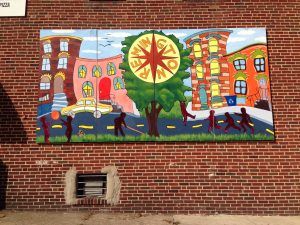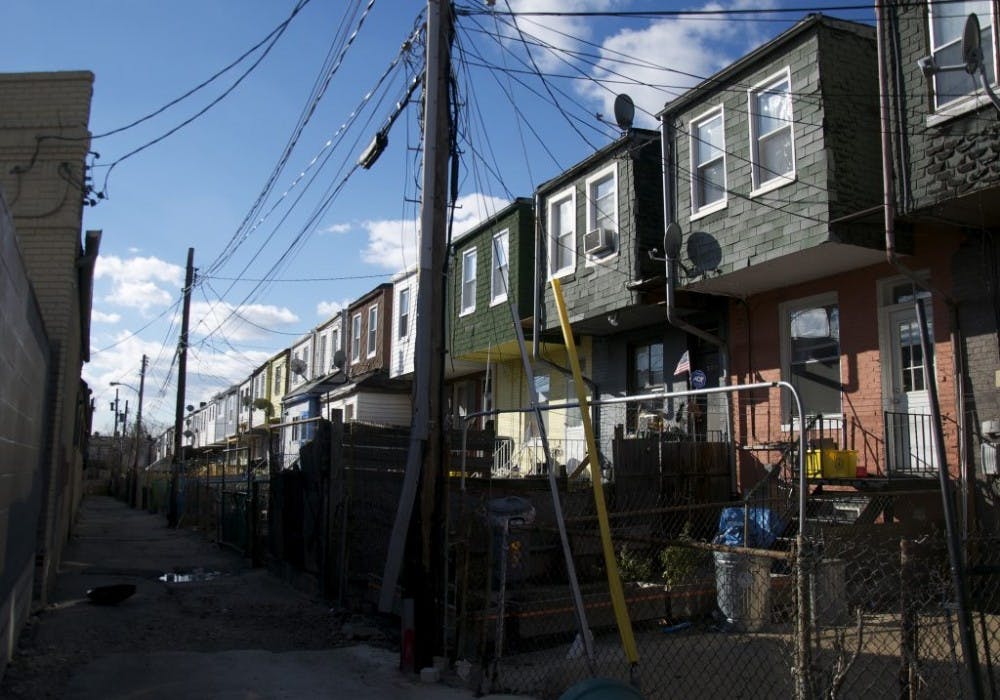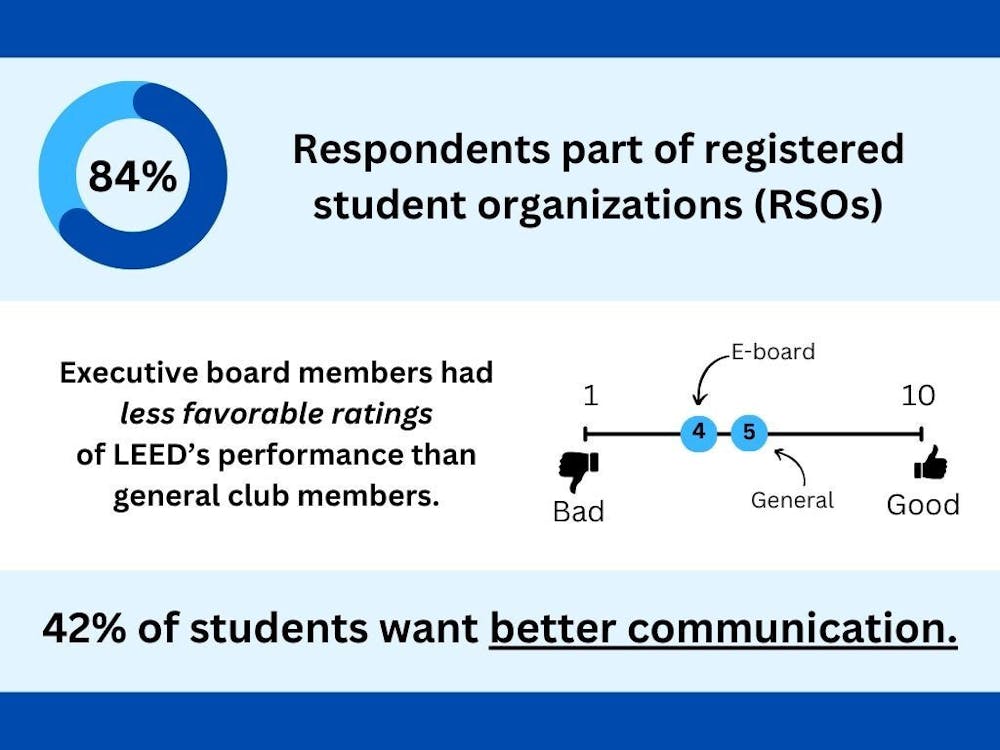For the past 20 years, Pastor Alice Bassett-Jellema has watched Remington change from her church’s porch. She is the current pastor of the Church of the Guardian Angel, which sits on the corner of 27th Street and Huntington Avenue.
“There are plenty of people coming into the neighborhood who are trying hard to do good things,” she said. “Overall, the problem with what’s happening here is that gentrification happened very, very quickly to people who were utterly unprepared and incapable of making any legal response.”
The Remington neighborhood sits just to the south of the Homewood Campus. For the past five years, there has been greater investment from organizations like Seawall Development Corporation, which began its operation in the neighborhood 10 years ago.
Seawall owns and operates R. House, a trendy food market, as well as Remington Row, an upscale apartment complex in the working class neighborhood. Both opened last year.
Remington Row also houses small businesses like a dry cleaners and a Rite Aid as well as the new office of the Hopkins Community Physicians, a group of primary care clinics, formerly located in the Wyman Park Building.
Many other small restaurants and bars have recently opened, bringing a new higher-income clientele with them.
Shawn Brown was hired as director of marketing and leasing for Seawall Development after the planning process for Remington began. She elaborated on the close relationship that Seawall lead developer Thibault Manekin and University President Ronald J. Daniels have had throughout the development process.
“They were very much in agreement that for Hopkins to thrive, the neighborhoods around Hopkins need to thrive,” Brown said.
However, Andrew Frank, Daniels’ special advisor on economic development, characterized the relationship in different terms. He stated that the University has not invested in any of Seawall’s development projects and that the only clear relationship between the corporation and the University was moving Hopkins Community Physicians to Remington Row.
“I don’t know how to define the relationship with the University,” he said. “The space where I worked on was trying to identify an off-campus building for Johns Hopkins Physicians and there was a match at Remington Row. Seawall is the landlord and Hopkins is the tenant.”

Residents of Remington are conflicted about the impacts of the new developments. They worry about the effects of rising property costs while appreciating the more efficient use of what was formerly vacant properties.
Ryan Flanigan is president of the Greater Remington Improvement Association (GRIA). He has lived in Remington for the past five years but grew up in downtown Baltimore. Flanigan works part time at the community organization when he is not working his full-time job as an upholsterer.
GRIA was consulted during the planning process for both R. House and Remington Row and expressed support for the project which replaced an auto body shop, vacant houses and relocated the Baltimore Glass Company further up Remington Avenue.
“[Seawall said] we are going to take land that was not doing much and do more productive things,” Flanigan said. “I think that the community determined that was in our interest.”
Even though the community initially supported the development, Flanigan remarked that residents are now more aware about how the ongoing investment is changing the neighborhood.
“I would say that the reaction is generally positive, but the stakes have changed in the community and people are much more cognizant of the changes that are here and what other changes could be coming based on these,” he said.
Thibault Manekin is the co-founder of Seawall and the lead developer on the corporation’s projects in Remington. He defends the projects by emphasizing that community members had a voice in Seawall’s development plans. He spoke about how he himself had spent six months knocking on residents’ doors and seeking feedback even before construction began.
“Across the board people were excited that the old vacant buildings were getting repurposed. People were really excited that new neighborhood retail was coming in,” he said. “People wanted a pharmacy — there wasn’t one in the neighborhood. People wanted a bank because there wasn’t a bank; people wanted a dry cleaner.”
As director of marketing and leasing for Seawall, Brown solicits community members’ feedback on the impact of the new properties. She acknowledged that there has been criticism toward the company’s actions.
“Even in the year and a half that I’ve been at Seawall this area has changed so much,” Brown said. “Some people love that; Some people don’t. We need to listen to both sides of that and find where is that middle ground.”
Despite this communication with the community, residents are still concerned about the possibilities of rising house prices, displacement and the changes in culture that some have felt following the new development.
“One person’s cool, nifty little neighborhood is somebody else’s last nail in the coffin,” pastor Bassett-Jellema said.
Historically, Remington was a mill town. Like many of the neighborhoods in the area it made use of Jones Falls in order to power grist and textile mills. Quarries in the area also supplied jobs as well as building material for the greater Baltimore area.

“This housing was not ever built to be fabulous and strong and wonderful, it was worker housing,” Bassett-Jellema said.
The housing market in Remington has long been divided between renters and homeowners. A former renter herself and a leader within her community, Bassett-Jellema has had both first- and second-hand experiences with the difficulty of renting.
When Besset-Jellema arrived in Remington, many of the rental properties in the area were becoming Section 8 housing, where lower-income renters could receive vouchers in order to lower rent and utility costs. In part, this was caused by the wealthier, middle class white and African-American families leaving the area.
However, in recent years Remington has seen almost a reversal of this trend as more people move into the neighborhood. In part, this has been supported by the Hopkins-run, Live Near Your Work initiative which offers grants for Hopkins staff who choose to live in certain areas of Baltimore city. Currently the maximum incentive offered for University employees who choose to live in Remington is $10,000.
Andy Frank, special advisor on economic development at Hopkins, stated that from 2012 to 2016, only seven grants were awarded.
“It’s not likely that those seven grants over four years have had that much of an impact on rising house values,” he said.
However, Molly McCullagh, who has lived in Remington for almost five years and is the current vice president of GRIA, responded that it is the neighborhood’s close proximity to the University itself that has changed the area’s housing market.
“When you have people who are moving from outside the city or outside the state coming to school for relatively temporary, or who have higher incomes because they are faculty members or staff members, that can really have an impact on a neighborhood,” she said. “We’re now seeing that Hopkins is having a little more of an impact in both good and maybe negative ways.”
According to City-Data, a database of government and private data, the median house or condominium value in northern Remington, where most of Seawall’s projects are located, has increased by over $130,000 between 2000 and 2013.
Bassett-Jellema spoke about the changes that have come to her own street, Miles Avenue as development and homeownership in the area has increased.
“In one summer, the 2900 block of Miles, which was sort of the high rent district of Remington... went from almost all black families to almost all white single people,” Bassett-Jellema said.
More and more people in the area have begun to feel housing stress as the neighborhood has become more desirable to outsiders.
“As Seawall came in, the rents began to go higher, before even a thing was built for Seawall. The rumor that there was going to be this development meant that rents were going up and people were being moved out by their landlords,” Bassett-Jellema said.
Flanigan echoed these sentiments.
“My dear friend Gary, a young man, lived on this block, three kids... but he had to leave because he was in a rental situation with a slumlord who wouldn’t change anything, and the rats were chewing holes through his walls. He just had to get up and go in a neighborhood where historically there would have been a few other options,” Flanigan said.
In response to the rising housing prices, Seawall has been working alongside GRIA in order to establish affordable housing in the area through the creation of a community land trust. Houses that are part of this trust would be owned by the community and leased long term to low income residents. This would help to protect these families from the rising property values.
“In the hopes of preserving the multi-class diverse community that Remington has always been since its inception we have to take deliberate action, and that’s why we are currently organizing around creating permanently affordable community controlled housing,” Flanigan said.
Brown explained the changes that have taken place in the community and emphasized the importance of listening to ensure that this change is positive.
“I think, more than ever, it’s a time for people to come together. Creating economic diversity in addition to race and gender, ethnic diversity is very important to us. Again, that goes back to listening. If somebody paid for their house in 2005, in 1985, in 1970, yes, those prices are going to change,” she said. “It is never ever okay to have whole populations move out and be displaced from where they were.”
Craig Bettenhausen is a 9-year resident of the neighborhood and former Hopkins student. He has noticed the changes that the community has undergone but sees the development as inevitable.
“We are probably coming into a period of faster transition, which is good and bad, largely dependent on where you are socioeconomically,” he said. “People like me are going to be fine. Other communities in Remington are going to have a tough time over the next five or 10 years. And that was going to happen; Someone was going to come in.”
He described what made the area so appealing for developers.
“The community was undervalued given its location and proximity to Hopkins, proximity to [Interstate] 83. Somebody was going to come in with a lot of money and do something big,” he said. “And Seawall did, and we could’ve done a lot worse with a developer.”
In contrast, Basset-Jellema cautions others against accepting perceived improvements.
“When you look at demographics in a gentrified neighborhood you say, ‘Isn’t that great? Look at that, they’ve got such better education; They’ve got such better jobs. Isn’t it wonderful?’” she said. “And the problem is, nothing changed except the people. There was a people swap.”
Remington continues to experience a great amount of wealth disparity. According to 2000-2013 census data, northern Remington’s median household income is just under $60,000, significantly higher than the $38,731 calculated for Baltimore by the American Community Survey in 2011. However, southern Remington has an average household income just below this at $37,813. In both areas, income levels have increased by over 40 percent.
Bassett-Jellema points out the disparity in her neighborhood in each person that she greets.
“The guy coming down the stairs over there, he is currently renting a portion of a piece of floor of that house, and as soon as the weather gets better he could be back down under the 28th street bridge,” she said. “There are still people living under bridges in this community, at the same time that people are living in the big beautiful apartment house.”
Austin Haynes, a two-year resident of Remington, points the out that the incoming residents bring a new culture to the neighborhood.
“The people that live [in Remington], that have lived there a long time, they like hanging outside on their stoops,” he said. “A lot of the people that have been moving in like going out to local bars. It’s kind of a different scene.”
Bettenhausen, although he enjoys and has frequented the new establishments, also acknowledged this change.
“I think that [the new developments] are accessible but not necessarily inviting in the way that they need to be inviting in order to bring the older residents in, the people who have been here for a couple of generations,” he said. “Maybe there’s nothing stopping anyone from walking into the Remington wine company or R. House, but it’s shinier and fancier, and something about it reads as more middle class, yuppie perhaps, than what has been there before.”
Stephanie Hsu is the marketing and events manager for R. House. Before their opening in December of last year, the food-court-style dining venue hosted a job fair open to Remington residents.
“We actually hired several people from the community to work with us and kind of, be the face of R. House,” Hsu said.
The company has also worked closely with GRIA since the beginning, hosting a soft-opening for the dining facility that was specifically targeted towards the Remington community.
However, residents feel that the business is still not doing enough to incorporate themselves into the neighborhood.
“They want the neighborhood to come to them and get on their level, but I don’t see them trying to make any friendly combinations, any friendly gestures to try and get some locals in,” Haynes said. “I think they’re pretty content with being a destination rather than being a local spot.”
R. House, Hsu argues, is continually trying to increase the accessibility of its space to residents. She spoke about future projects, including a farmer’s market, cooking classes or a Remington community- exclusive happy hour.
“The key thing that stands out to me is that, in the talks of gentrification our primary focus is how do we elevate rather than displace what’s already here,” she said.
These recent developments have drawn greater attention towards Remington from the Hopkins community as well as the surrounding neighborhoods.
Shawn Brown spoke about the role that Seawall has had and continues to have in getting Remington on the map.
“I am just so proud to be a part of an organization that is making this community so, so cool. It was cool before we got here; It will be cool until the end of time, hopefully,” she said. “But it’s been a real honor to get to know folks in this community, to share their ideas and their vision for a future.”
Bassett-Jellema has a different perspective on the future of the community.
“I think this place went lower and lower and lower and tried to be under the radar until somebody scooped it up and saw a great bargain and has probably made a great profit out of it,” she said. “The people who lived here continue to have the problems that they’ve had and have just been moved someplace else to mess up somebody else’s statistics.”
This article is part of a series on the University’s relationship with its surrounding communities.

















Please note All comments are eligible for publication in The News-Letter.